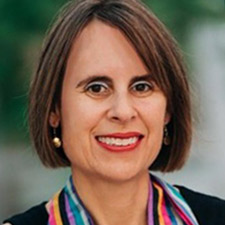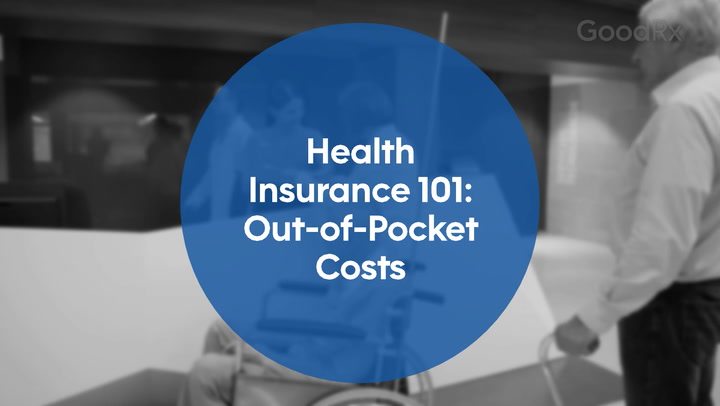
Uninsured vs. Underinsured: What’s the Difference?
Key takeaways:
Underinsurance generally means your out-of-pocket healthcare costs eat up 10% or more of your household income, or your deductible equals 5% or more of your income.
Being underinsured can cause people to go without medical care or lead to debt.
Insurance add-ons can help with coverage gaps, but they come at an extra cost.
There are free and low-cost healthcare options that cater to people who are uninsured and underinsured.

When it comes to health insurance, it’s easy to know if you’re uninsured: you either have coverage, or you don’t. But being underinsured is more of a gray area. You have health insurance, but because of a high deductible or other out-of-pocket costs, it doesn’t cover as much as you might need. Your income may not be high enough to offset the coverage gaps.
Below, we break down what counts as being underinsured, the financial risks involved, and options if you find yourself in that position.
What counts as being underinsured?
In general, being underinsured means that your insurance is inadequate for your healthcare needs, so the costs of care would be a financial burden to you.
Search and compare options
There isn’t a universal definition for being underinsured. But the Commonwealth Fund defines it as one of the following:
Your out-of-pocket healthcare costs in the last year — not counting premiums — represent 10% or more of your household income. (The threshold drops to 5% if you’re living under 200% of the federal poverty level. That’s less than $53,000 for a family of four in 2021 in any state but Hawaii or Alaska.)
Your deductible — the amount you have to pay before your health insurance starts paying your covered medical costs — is at least 5% of your income.
“It’s really about people’s benefits,” said Sara Collins, vice president of health care coverage and access at the Commonwealth Fund, a New York-based nonprofit private foundation that supports independent research. “The Affordable Care Act went a long way in making benefits more affordable. But a lot of people still have high-cost medical care, whether they get it through the marketplace or through their employer.”
The growth of high-deductible health plans has played a role in the growing problem of underinsurance. The plans often come with low premiums. But between 2010 and 2020, the percentage of adults with deductibles of at least $1,000 more than doubled, the Commonwealth Fund found. About 40% of Americans now have deductibles of $1,000 or more. People with a deductible that high were much more likely to say they had problems paying medical bills than those with lower deductibles.
| Uninsured (2019) | Underinsured (2020) |
| About 11% overall | About 21% of adults under age 65 overall (25% of adults in employer health plans) |
| 29 million people | 41 million people |
Sources: Kaiser Family Foundation (uninsured) and the Commonwealth Fund (underinsured)
Underinsurance is related to another healthcare money condition. The added burden of coping with treatment-related financial stress while dealing with a serious illness like cancer has a name. Some people who study the effects of high out-of-pocket costs call it “financial toxicity.”
If you’re uninsured, what types of financial risk are you taking on?
If you’re uninsured and need healthcare, you typically will pay more for your care and prescription drugs than someone with health insurance that helps defray the costs. Hospital costs for the uninsured can be two to four times as high as what health insurers pay for services, according to the Kaiser Family Foundation (KFF).
Read more like this
Explore these related articles, suggested for readers like you.
The biggest financial risk is getting sick or injured and falling behind on healthcare bills. Being unable to pay can lead to collection calls, medical debt, and even bankruptcy in worst-case scenarios. Avoiding medical care and letting your health issues get worse and more expensive can also be difficult.
Being uninsured often means you’ll have to pay for any treatment you do seek ahead of time instead of after you receive it. A KFF analysis found that medical staff asked a third of uninsured adults to pay the full cost of care upfront before they could see a doctor.
The number of uninsured Americans reached 46.5 million before the Affordable Care Act (ACA) became law in 2010, KFF found. It then dropped to a low of 26.7 million in 2016 as the marketplaces and more state Medicaid programs expanded coverage. In 2019, about 29 million people lacked insurance. The uninsured rate had been increasing for three years. Reasons for the rising rate vary.
For some, health insurance may be out of reach because of high costs or immigration status that makes them ineligible for Medicaid or marketplace coverage. For others, coverage may feel like an unnecessary expense — especially for those who are young and in good health. But the point of buying health insurance is for protection when you need it, not when you don’t.
With the ACA, people under age 65 who chose to go without insurance used to face a national mandatory fee at tax time. That part of the law is no longer in effect. But a handful of states still apply a similar financial penalty for having long breaks in insurance coverage if you can afford to buy it. Those places include:
You could be subject to fees — typically around $695 for individuals and $2,000 for families — if you live in those areas and opt out of health insurance. You also may miss out on health insurance tax credit subsidies, which could lower your monthly premium costs if you had ACA coverage. The American Rescue Plan made the subsidies temporarily more generous. You also could be missing potential cost-sharing reductions for eligible ACA plan applicants.
You also can apply for Medicaid at the same time you apply for ACA marketplace coverage.
Do you have fewer healthcare options if you’re underinsured?
Being underinsured means having less access to affordable healthcare. But there are other options that can help fill in the gaps. Examples include supplementary insurance (also known as add-ons) and programs specifically for those who are uninsured or underinsured.
Can supplemental insurance solve being underinsured? Are there any other options?
Supplemental insurance is extra coverage that’s designed to help with expenses that fall outside of your existing insurance.
If you’re eligible for Medicare, you have access to Medicare supplement insurance called Medigap. These are 10 nationally standardized private plans that help cover the copays, coinsurance, and deductibles from Medicare Parts A and B.
Medigap premium costs vary. For example, the monthly premiums for Medigap Plan A in 2020 ranged from $147 to $784 for someone age 65 to 69 in Connecticut. It’s important to shop around for the lowest premium, as that is the only cost difference between standardized Medigap plans, unlike other kinds of insurance.
Medicare enrollees who choose Medicare Advantage as an alternative to original Medicare may find additional benefits such as vision, dental, and hearing care that original Medicare doesn’t cover.
If you’re under age 65 and have private insurance, you may find supplemental insurance either through your employer or from a broker for extra coverage such as:
Vision
Dental
Hospital or fixed indemnity
Disability
Long-term care
Some supplemental policies may be solid options for those who need extra coverage to their major medical insurance — but these plans come at an extra cost. You’ll also need to read the fine print to understand coverage limitations and how the insurer pays claims.
“If you have an ACA-compliant plan, which is what’s sold in the marketplace now, you’re pretty well covered for most services. It’s the out-of-pocket costs that can be difficult for people,” says Collins. “Some people buy policies that are not ACA-compliant — so, policies you might get through a short-term plan or something through a religious organization. These plans tend to be very skimpy. You can be caught in a pickle with one of those policies if you do get really sick.”
A supplementary dental policy can be helpful, especially for those who know they’re going to need a lot of dental work, Collins said. Dental coverage isn’t considered an essential health benefit for adults, but it is for kids. So, dental coverage must be available for ACA plan applicants with children to buy if they want it. But it isn’t required.
What programs can help you find free or low-cost health insurance?
Options for free and low-cost healthcare include:
Federally qualified healthcare centers (FQHC): These provide medical care on a sliding scale based on your income and are required to accept all patients regardless of ability to pay. They also take private insurance.
Rural health clinics: If you live in a rural area, these clinics can be an option. They aren’t required to take uninsured people, but many will. These operate on a sliding scale, similar to an FQHC.
Local free or volunteer clinics: Another option for low-cost and free healthcare, volunteers often run these. They serve those who are uninsured and underinsured.
School-based health centers: If you have a school-aged child, this may be useful when seeking medical care. They offer age-appropriate health services with an emphasis on prevention and early intervention. The costs will vary from center to center.
There are FQHCs that provide care to specific populations as well, such as:
Migrant health centers for farmworkers and their families.
Public housing primary care for public housing residents.
Healthcare for the homeless program for those who are experiencing homelessness. Homeless shelters also offer free medical care to residents.
When it comes to medication, drug manufacturers’ patient assistance programs can act as a safety net for those who are uninsured or underinsured. They can help lower the cost of critical medications for those who are eligible.
GoodRx can help, too, whether you have coverage or not. For example, if you have health insurance but the cost of your prescription medication is still too high, GoodRx may have a coupon that can help you afford it.
If you’re underinsured, can you still contest coverage decisions?
Yes. If your health insurance company refuses to pay a claim, you have the right to appeal the decision — internally or externally with a third party. Your health insurer is required to give you information about how to file such an appeal. For the appeal to be approved, that third party must find that your policy covers the healthcare costs in question. So, if there are holes in your coverage, you may not be successful. But it helps to know how to write an appeal letter to make your best case.
If you end up with medical debt, you can take steps to protect yourself — like asking for a discount and setting up a payment plan.
The bottom line
Being underinsured or uninsured can cause you to delay needed healthcare or accumulate medical debt. Supplemental insurance policies may help in some cases. But it’s important to choose wisely and understand coverage limitations. Medicare enrollees have a standardized option for supplement insurance called Medigap. Those who lack adequate major medical coverage have other options, like federally qualified health centers and local health clinics. These free and low-cost services can help fill in healthcare gaps when costs become burdensome.
Why trust our experts?


References
Centers for Medicare & Medicaid Services’ Healthcare.gov. (n.d.). Federal poverty guidelines.
Centers for Medicare & Medicaid Services’ Healthcare.gov. (n.d.). Dental coverage in the marketplace.
Centers for Medicare & Medicaid Services. (n.d.). Health coverage options for the uninsured.
Centers for Medicare & Medicaid Services’ Healthcare.gov. (n.d.). How to appeal an insurance company decision.
Centers for Medicare & Medicaid Services. (n.d.). How to compare Medigap policies.
Centers for Medicare & Medicaid Services. (n.d.). Rural health clinics center.
Commonwealth Fund. (2020). U.S. Health Insurance Coverage in 2020: A Looming Crisis in Affordability. Commonwealth Fund Biennial Health Insurance Survey, 2020.
Commonwealth Fund. (2021). Will the American Rescue Plan reduce the number of uninsured Americans?
Commonwealth of Massachusetts. (2021). Health care reform for individuals.
Covered California. (2021). Penalty.
D.C. Healthlink (2021). DC’s individual responsibility requirement.
Health Resources & Services Administration. (2017). School-based health centers.
Healthsource RI (2021). RI health insurance mandate.
HRSA Data Warehouse. (n.d.). Find a health center.
Kaiser Family Foundation. (2019). The uninsured and the ACA: A primer — Key facts about health insurance and the uninsured amidst changes to the Affordable Care Act.
Kaiser Family Foundation. (2020). Key facts about the uninsured population.
National Association of Free & Charitable Clinics (2016). Find a clinic.
National Cancer Institute. (2020). Financial toxicity (financial distress) and cancer treatment (PDQ) — Patient version.
National Center for Farmworker Health. (2020). Migrant health program.
National Center for Health in Public Housing. (2021). Public housing primary care program.
National Conference of State Legislatures. (2017). Immigrant eligibility for healthcare programs in the United States.
National Health Care for the Homeless Council. (2021). Working to end homelessness by ensuring health care and housing for all.
State of New Jersey. (2021). NJ shared responsibility requirement.
Substance Abuse and Mental Health Services Association (SAMHSA). (2021). Do you have health insurance?




























